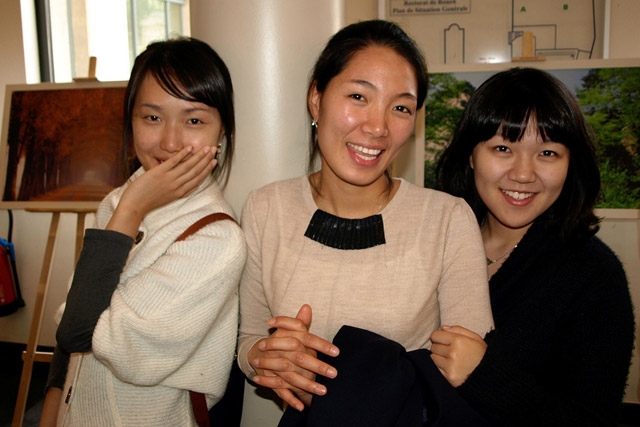
In Korea, the marriage between a man and woman represents the joining of two families, rather than the joining of two individuals. As such, the event was often called Taerye (Great Ritual), and people from all over participated. Steeped in traditional Confucian values, the ceremonies and events surrounding the actual marriage were long and elaborate, from the pairing of the couple to the rituals performed after the ceremony.
Professional matchmakers paired up likely candidates for marriage, with the new couple often meeting for the first time at their wedding! The families considered many factors in the decision, consuting with fortune tellers for predictions about the couple's future life together. During the Chosun period, people married in their early teens, with the girl often being several years older than the boy.


The groom usually traveled to the house of the bride for the ceremony, then stayed there for 3 days before taking his new bride to his family's home. The actual ceremony involved many small rituals, with many bows and symbolic gestures. The participants were expected to control their emotions and remain somber.Although Koreans have kept several aspects of the traditional ceremony, most modern ceremonies resemble Western marriage ceremonies more than traditional Korean ones. However, many folk villages and museums across the country regularly perform ceremonies to keep the traditions alive.
(http://www.lifeinkorea.com/culture/marriage/marriage.cfm)
https://www.statista.com/statistics/1248697/south-korea-opinion-on-marriage-by-gender/

The Republic of Korea (ROK) has experienced very rapid industrial growth and economic modernization since the end of the Korean War. Although the society's material change has been substantial, behavioral adjustments to the economic developments have occurred slowly and have sometimes been justified by tradition. Thus, inequities in women's opportunities are maintained through an elaborate system of role relationships that are rooted in and rationalized by Confucian customs; they are socially mandated and often legally condoned. However, despite the cultural limits on behavioral change, a women's rights movement has developed in the ROK over the past several years, and it is addressing issues of equity and worker exploitation-two universal concerns of modernized societies. The interaction of tradition with the calls for change issued by this women's rights movement is the focus of this study.
To read the whole article, click HERE.
https://www.jstor.org/stable/2644990
The purpose of this monograph is to provide recommendations to busy rehabilitation service providers in the U.S. for effectively working with persons who hold traditional Korean values. The topics of Korean history, immigration, culture, language, religion, food, views on disabilities and rehabilitation services typically available in Korea are covered briefly to provide the reader with a quick overview and background. For those who seek more detailed information, the references cited in each section can be used as a starting point. For those with prior background knowledge of Korea, I suggest reading Part II first, in which I introduce Korean culture with case stories in the context of rehabilitation process.
To learn more, click HERE:

In traditional Korean society, women's roles were confined to the home. From a young age, women were taught the virtues of subordination and endurance to prepare for their future roles as wife and mother. Women, in general, could not participate in society as men did, and their role was limited to household matters.
The situation began to change with the opening of the country to the outside world during the late 19th century. During this period modern schools were introduced, mostly by Western Christian missionaries. Some of these schools were founded with the specific goal of educating women. These educated women began to engage in the arts, teaching, religious work, and enlightening other women. Women also took part in the independence movement against the Japanese occupation, and displayed no less vigor, determination, and courage than the men.
To read the whole article, click HERE.
https://asiasociety.org/education/womens-role-contemporary-korea
https://www.statista.com/statistics/815849/south-korea-survey-on-the-most-important-women-issues/